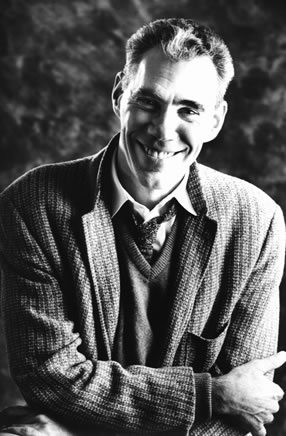
Of all the literary tendencies associated with the New American Poetry in the 1950s & ‘60s, just one continues to both thrive & evolve in something remotely similar to its classic form. And that is the New York School.
By the New York School, tho, here in 2004, I don’t mean every young poet who happens to be living in New York (and certainly not Brooklyn). I mean pretty much gens one through three, or thereabouts, back when the NY School was an identifiable t’ing.
It makes enormous sense, for example, that the literary tendency whose one major theoretical statement was Frank O’Hara’s tongue-in-cheek manifesto, “Personism,” should emerge four decades hence as the one that truly values the memoir as a form. I would wager that some four decades further down the road, we’ll see that the memoir is as important to the NY School as critical writing was to the Projectivists (Olson’s Mayan Letters, Human Universe, Call Me Ishmael, Creeley’s A Quick Graph, Duncan’s The H.D. Book, the writing of Gilbert Sorrentino). Nobody seems to get this more clearly than does Ron Padgett, who in addition to being a super poet & great translator has evolved into the finest memoirista of a generation that is just one step older than my own.
Following the diary of a trip to Albania & memoirs of Ted Berrigan & his own father, Joe is Padgett’s fourth venture into the form. It’s a lengthy, rich, elegant portrait of painter & writer Joe Brainard, whom Padgett met literally in first grade (the class photo faces the first full page of text).
As such, their relationship may well have been the earliest in getting started of any collaboration in the arts anywhere on the part of writers or artists who were not blood relations. That is, if you think of it, an enormous stroke of luck. Leslie Scalapino & I grew up within two miles of one another & I think we even graduated from high school in the same year, but I wouldn’t meet her until we were both adults – that’s more the usual circumstance, alas. Thus I didn’t get to know Steve Vincent, Lyn Hejinian, Michael Davidson or Barrett Watten either for quite a long time. I met Barrett first when I was 18 and he was 16 or 17. All the rest turned up quite a bit later. I don’t think much more than five or six miles separated the six of us during at least some of those years in the 1950s & early ‘60s. Yet you know somebody as a kid in ways that are very different from the ways that are available to grownups.
One can still fairly claim that Brainard is one of the most severely underrated artists of his generation, though the fault for that is largely his own. He must have distrusted the ease with which some things came to him, for he seems to have been perpetually unsatisfied with his work and did everything he could over the last 15 years of his life to avoid the sort of major shows it clearly warranted. When his posthumous retrospective appeared at the UC Art Museum in Berkeley (it later toured, ending up at P.S. 1 in New York), the range, depth & especially the darkness of some of the work were major revelations. His assemblages & altars in particular were completely new to me & show a side of him not apparent in his paintings, drawings, book illustrations, nor in his writing.
When I was in San Francisco last month, I had a bookseller tell me passionately that “I don’t care what the critics say, I Remember is the greatest long poem of the 20th century.” I might not agree with that, but I certainly can hear it, certainly can imagine the parallel universe in which that statement is absolutely true. It is a remarkable work not for its form, but its attention to detail – it chronicles its present more fully than any other text of the past 40 years.
Padgett’s memoir is written in short chapters – visually, they look like separate pieces, but they read as a sustained (if episodic) narrative. In many ways, this is an interesting book to put alongside Padgett’s first such effort, Ted. I like Ted a lot, but Padgett has grown enormously as a prose writer over the past decade & Joe is a lightyear beyond his earlier effort, so much so, in fact, that I’d love to see Padgett revisit his relationship with Ted Berrigan.
It turns out, of course, that a major reality of the New York School, especially in its second generation, is its relationship to Tulsa. Padgett is the one real connection to that nexus we have left. We are fortunate that he’s so generous with this heritage.





